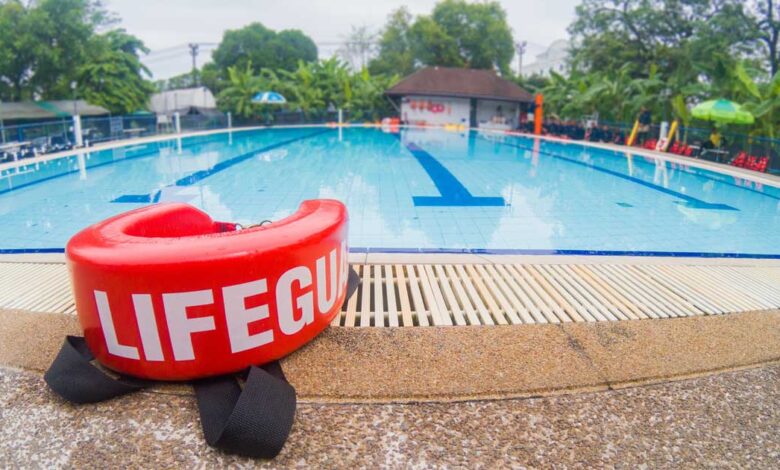Addressing the Issue of Lifeguard shortage

Lifeguards play a crucial role in ensuring the safety of swimmers. They prevent drowning and handle emergencies. However, numerous communities face a lifeguard shortage. This issue impacts the safety of pools, beaches, and water parks. Understanding the causes and it is essential to track down arrangements.
The Significance of Lifeguards
Lifeguards save lives. They look after swimmers and answer emergencies. Their presence decreases the gamble of drowning. They likewise teach people in general about water safety. Without enough lifeguards, the gamble of accidents increments. Pools and beaches could close, restricting sporting options.
Causes of Lifeguard shortage
A few variables add to the lifeguard shortage. Understanding these can assist with addressing the problem.
Seasonal Nature of the Job
Lifeguarding is many times a seasonal job. Numerous lifeguards work just during summer. This creates a popularity for lifeguards in a brief period. During the slow time of year, many continue on toward different jobs or return to school.
Lack of Awareness
Many people know nothing about the requirement for lifeguards. They probably won’t think about it as a job choice. Expanding awareness can assist with drawing in additional competitors.
Severe Certification Requirements
Lifeguard certification is important yet can challenge. The training is thorough and time-consuming. Some potential applicants could find it difficult to finish the cycle.
Competitive Job Market
Lifeguarding rivals other summer jobs. Positions in retail or accommodation could offer better pay or more hours. This opposition makes it harder to draw in lifeguards.
Addressing the Shortage
Addressing the lifeguard shortage requires a diverse methodology. Communities, organizations, and people can all play a role.
Increment Awareness
Bringing issues to light about the significance of lifeguards is crucial. Schools, community focuses, and social media can assist with getting the news out. Featuring the benefits and impact of lifeguarding can draw in additional applicants.
Further develop Pay and Benefits
Offering competitive pay and benefits can make lifeguarding more appealing. Rewards, grants, or extra advantages can help. This approach can draw more candidates and hold current lifeguards.
Flexible Planning
Numerous lifeguards are understudies or have different jobs. Offering flexible planning can assist with obliging their necessities. This can incorporate seasonal jobs, job-sharing, or flexible hours.
Support Lifeguard certification
Making lifeguard certification more accessible is vital. Offering local training meetings can help. Search terms like “lifeguard certification near me” can guide possibility to nearby programs. Sponsoring the expense of certification can likewise eliminate monetary boundaries.
Create a Positive Work Environment
A steady and positive work environment can hold lifeguards. Giving good management, group building exercises, and acknowledgment can encourage everyone. Blissful lifeguards are bound to return each season.
Community Involvement
Communities can play a significant role in addressing the shortage.
Volunteer Programs
Community members can volunteer to help lifeguards. This can incorporate assisting with non-administrative tasks. Opening up lifeguards to focus on safety can further develop effectiveness.
Partnership with Local Businesses
Local businesses can cooperate with pools and beaches. Sponsorships or gifts can assist with financing lifeguard programs. Businesses can likewise offer impetuses for workers to become lifeguards.
School and College Programs
Schools and colleges can advance lifeguarding. Offering lifeguard training as a component of physical schooling or summer programs can draw in understudies. This approach incorporates training into understudies’ schedules, making it more convenient.
Technology and Advancement
Technology can likewise assist with addressing the lifeguard shortage.
Web based Training
Online lifeguard certification courses can give adaptability. Applicants can finish theoretical parts online at their own speed. This lessens the time required for face to face training meetings.
Safety Equipment
Advanced safety equipment can uphold lifeguards. Drones, automated external defibrillators (AEDs), and upgraded specialized devices can further develop safety. These advancements can assist lifeguards in their duties, making the job more manageable.
Case Studies
Examining fruitful techniques can give valuable experiences.
Small Town Initiatives
Some small towns have effectively addressed lifeguard shortages. They have done this by including the community and local businesses. These towns frequently see expanded lifeguard applications and maintenance.
Big City Programs
Enormous urban communities have implemented thorough lifeguard programs. These incorporate awareness campaigns, competitive pay, and broad training options. These systems have kept up with satisfactory lifeguard staffing levels.
Future Outlook
The lifeguard shortage is a complicated issue. However, with coordinated endeavors, it very well may be addressed. Expanding awareness, supporting certification, and further developing job conditions are key steps.
Conclusion
Lifeguards are imperative for water safety. Addressing the lifeguard shortage requires a diverse methodology. Communities, organizations, and people all play a part to play. By working together, we can guarantee our pools, beaches, and water parks are safe.
Role of the American Lifeguard Association
The American Lifeguard Association plays a crucial role in addressing the lifeguard shortage. They offer assets, backing, and training programs. Their endeavors assist with ensuring that more people can become certified lifeguards. Finding “lifeguard certification near me” through their network can assist with filling the holes in lifeguard staffing.
By banding together with the American Lifeguard Association, communities can further develop water safety and decrease the lifeguard shortage.



